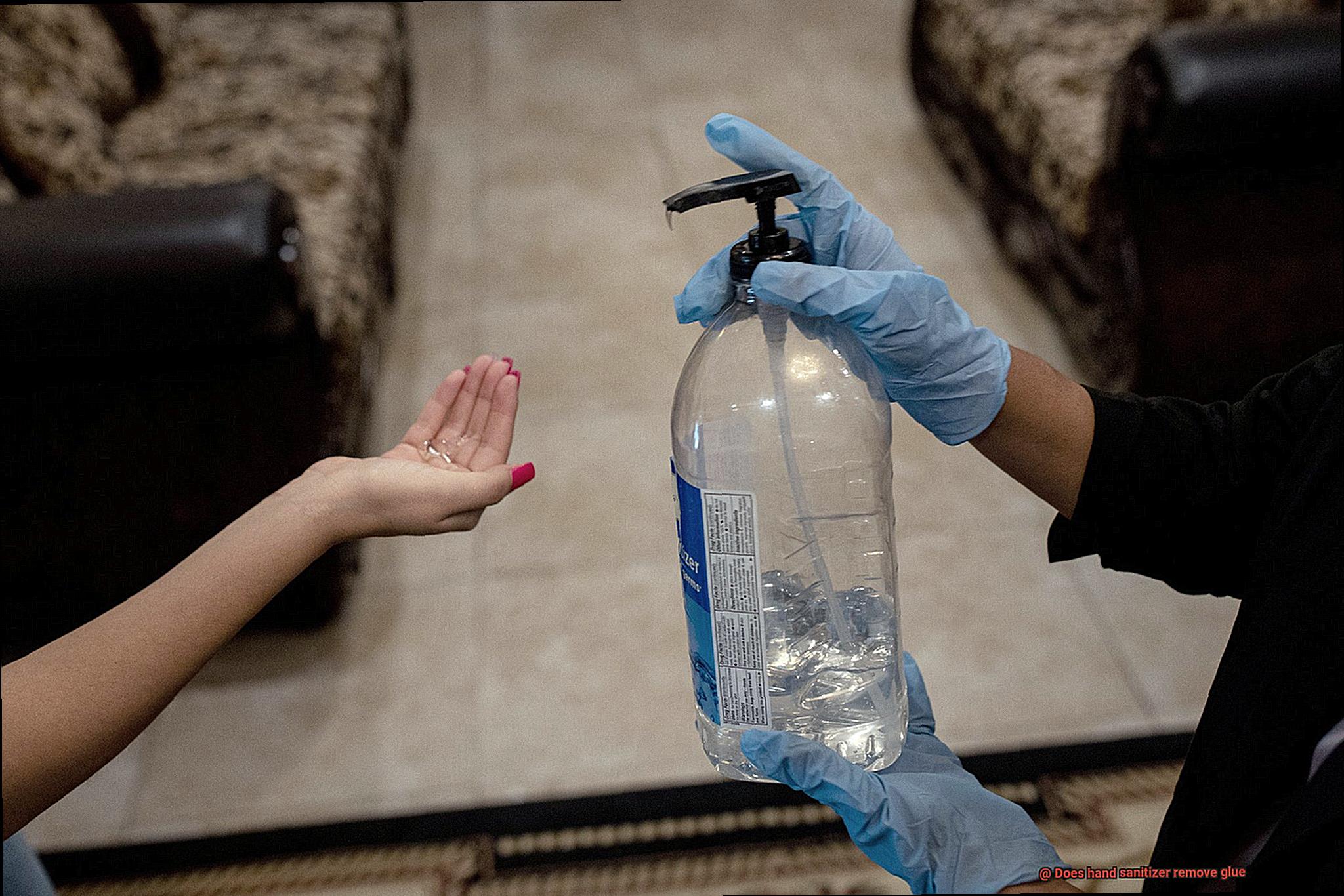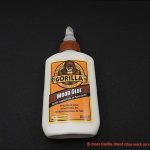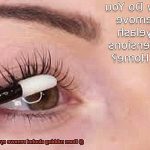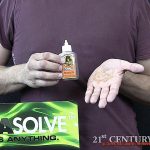We’ve all dealt with that annoying glue residue from price tags or DIY disasters. But guess what?
Hand sanitizer might just be the secret weapon you need to break free. Sure, it’s great at killing germs, but can it also tackle tough glue?
In this blog post, we’ll dive into the world of hand sanitizer and its magical powers against glue. Get ready to discover if this everyday hero is truly a game-changer or just another tall tale.
Brace yourself for some mind-blowing multitasking.
Types of Glue
Contents
- 1 Types of Glue
- 2 How Does Hand Sanitizer Work?
- 3 Does Hand Sanitizer Remove Water-Based Adhesives?
- 4 Does Hand Sanitizer Remove Super Glue and Epoxy?
- 5 Tips for Using Hand Sanitizer to Remove Glue
- 6 Alternative Solvents for Removing Strong Adhesives
- 7 What to Avoid When Using Hand Sanitizer on Glue
- 8 Conclusion
Sometimes, glue can get us into sticky situations when it ends up on our hands or surfaces. But don’t worry. In this article, we’ll explore the different types of glue and whether hand sanitizer can effectively remove them.
Super Glue – The Mighty Bond:
Super glue is like a superhero in the glue world. It bonds things together super fast and super strong. Unfortunately, it’s not easily washed away by water or hand sanitizer. So if super glue gets on your hands, you might need a special remover to get rid of it.
White Glue – The Artsy Pal:
White glue, also known as school glue or PVA glue, is perfect for arts and crafts projects. The best part? It’s water-soluble. This means that hand sanitizer might just do the trick in removing it. Simply rub a little sanitizer on the glue, and watch it disappear.
Wood Glue – The Woodworker’s Friend:
Wood glue is specially made for joining pieces of wood together. It’s tough stuff and doesn’t easily dissolve in water or hand sanitizer. So if you accidentally get wood glue where you don’t want it, you might need some other tricks up your sleeve to remove it effectively.
Epoxy Resin – The Super Strong Bond:
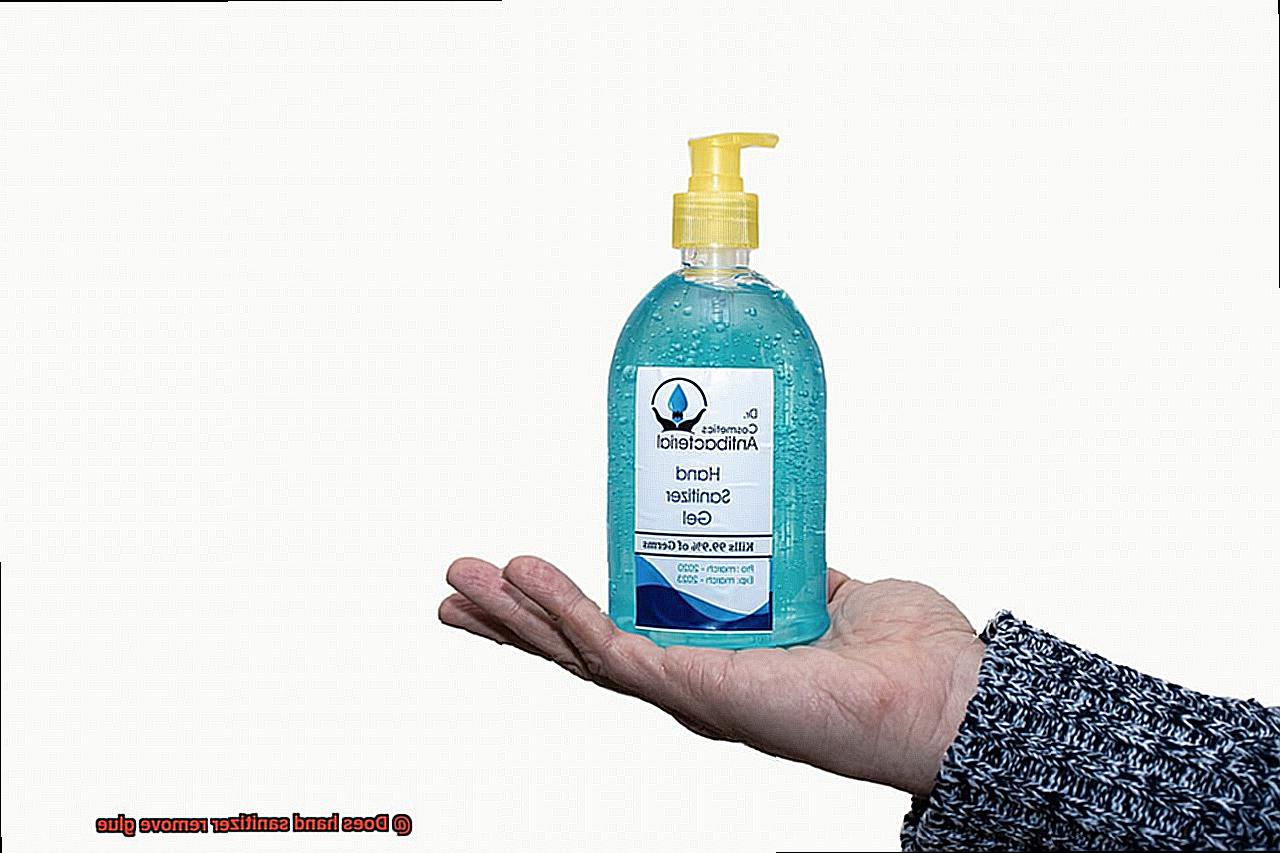
Epoxy resin is like a secret agent in the glue world. It forms an incredibly strong bond between materials like metal and plastic. Unfortunately, hand sanitizer alone might not be enough to remove epoxy. You may need to use special solvents or do some scraping to get rid of it completely.
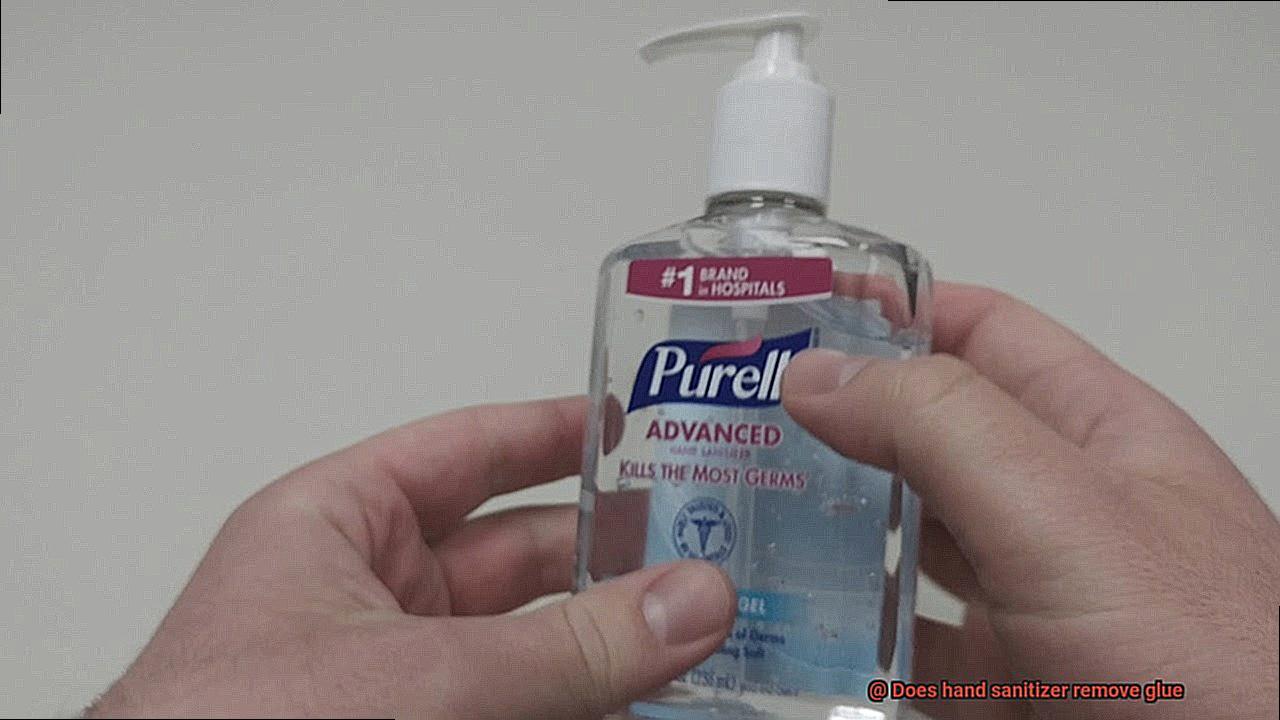
Fabric Glue – The Sewing Substitute:
Fabric glue is perfect for repairing clothes or attaching embellishments without sewing. The good news is that fabric glue is usually water-soluble. So if you accidentally spill some on your favorite shirt, you can try using hand sanitizer to make it disappear.
How Does Hand Sanitizer Work?
Hand sanitizer, that superhero of cleanliness, works its magic by utilizing the power of alcohol to kill germs and bacteria. But not just any alcohol – we’re talking about ethanol or isopropyl alcohol, known for their antimicrobial properties.
When you apply hand sanitizer to your hands, the alcohol gets to work by denaturing the proteins in the microorganisms. It swoops in like a superhero, disrupting their normal functioning and ultimately leading to their demise.
But here’s the important part – not all hand sanitizers are created equal. The Centers for Disease Control and Prevention (CDC) recommends using hand sanitizers that contain at least 60% alcohol to ensure maximum efficacy. So before you buy, make sure you check that label.
The consistency and formulation of hand sanitizers also come into play. You’ve probably seen them in gel, liquid, or foam form. The gel-based ones have the advantage of sticking around on your skin for longer, giving the alcohol more time to do its thing against those pesky germs. Liquid or foam sanitizers may evaporate quicker, but if used correctly, they can still provide effective germ-killing action.
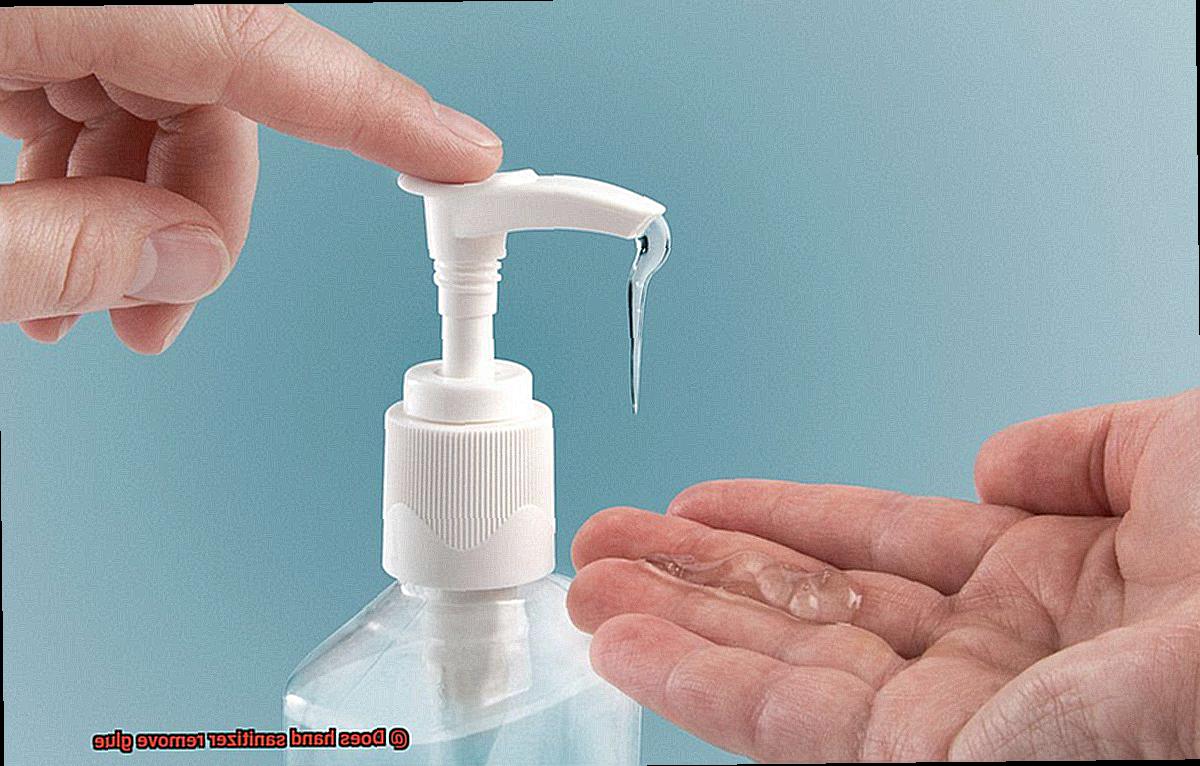
However, it’s important to note that hand sanitizers are not as effective when your hands are visibly dirty or greasy. So if you’ve been playing in the dirt or cooking up a storm in the kitchen, it’s best to wash your hands with soap and water. Hand sanitizers should be used as a supplement to regular handwashing, especially when soap and water aren’t readily available.
Does Hand Sanitizer Remove Water-Based Adhesives?
Let’s explore the effectiveness of hand sanitizer in removing water-based adhesives.
Understanding the Science:
Hand sanitizers contain alcohol as their active ingredient, which dissolves substances like grease and oils. Water-based adhesives consist of polymers, water, and additives. They work by drying out and forming a strong bond between surfaces. However, once dried and cured, they become resistant to water and moisture.
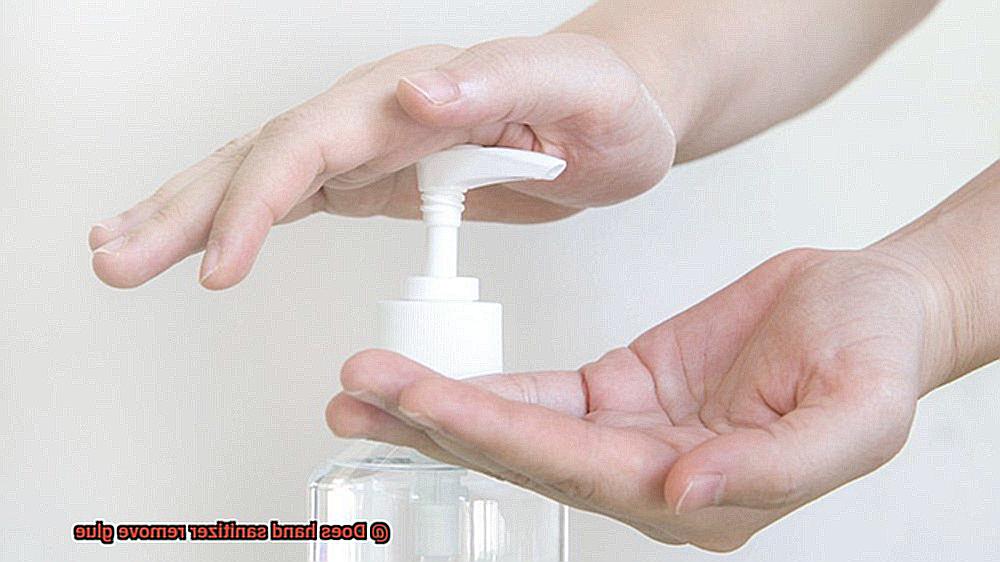
The Battle Begins:
Hand sanitizer may weaken or dissolve water-based adhesives to some extent due to the solvency properties of alcohol. The concentration of alcohol and the duration of contact with the adhesive play crucial roles. However, it’s important to note that hand sanitizers may not be as effective as adhesive-specific solvents.
Potential Pitfalls:
Using hand sanitizer to remove water-based adhesives may not be suitable for all surfaces. Some surfaces can be sensitive to alcohol or other ingredients in hand sanitizers, leading to potential damage or discoloration. To avoid mishaps, test a small inconspicuous area before attempting adhesive removal with hand sanitizer.
Calling in Reinforcements:
For optimal results and surface protection, use solvents specifically designed for adhesive removal. These solvents break down adhesives without harming the underlying surface. They are the real superheroes in this battle.
Does Hand Sanitizer Remove Super Glue and Epoxy?
Removing these strong adhesives can be a real challenge. While hand sanitizer may seem like a convenient solution, its effectiveness against glue requires careful consideration. Let’s explore the science behind it.
The Science Behind Hand Sanitizer:
Hand sanitizer contains high levels of alcohol, such as ethanol or isopropyl alcohol. These alcohols have the power to dissolve certain substances, including glue. However, removing super glue and epoxy with hand sanitizer depends on multiple factors.
Super Glue Showdown:
Super glue, or cyanoacrylate adhesive, bonds quickly and firmly to surfaces. Once dried and cured, it becomes stubborn to remove. Hand sanitizer can potentially soften the glue, making removal easier. However, its effectiveness varies depending on factors like hardness and quantity.
Epoxy Encounter:
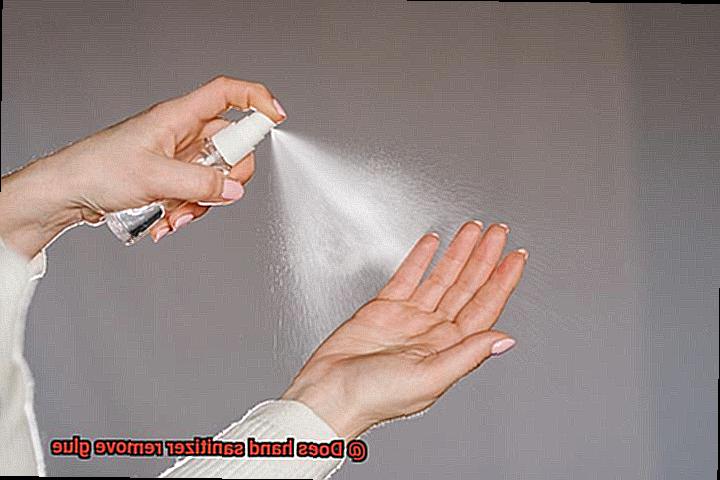
Epoxy is a two-part adhesive composed of resin and hardener. When mixed, they create a powerful bond that poses a challenge during removal. Hand sanitizer may partially soften epoxy but cannot fully dissolve or eliminate it.
The Battle Plan:
To use hand sanitizer against super glue and epoxy:
- Apply a small amount of hand sanitizer directly to the glued area.
- Gently rub the sanitizer into the glue using a cloth or sponge.
- Allow the sanitizer to sit for a few minutes, softening the adhesive.
- Start peeling or scraping off the softened glue with a plastic scraper or fingernail.
- Repeat as needed until the glue is gone.
Hand sanitizer can be a useful tool in combating super glue and epoxy, but victory is not guaranteed in every battle. Success depends on variables like adhesive type, surface, and curing time.
For tough or fully cured adhesives, specialized removers or following manufacturer instructions might be necessary. Remember to test hand sanitizer on a small area first to avoid damage. Be prepared and well-informed to conquer any sticky situation.
Tips for Using Hand Sanitizer to Remove Glue
Accidentally getting glue on your favorite toy or school project can be frustrating. But fear not. With the help of hand sanitizer, you can easily remove that sticky mess. In this article, we will explore some expert tips on how to effectively use hand sanitizer to remove glue from different surfaces.

Hand sanitizer acts as a magical solvent, dissolving the glue and making it easier to wipe away. So let’s dive in and learn how to make that glue vanish.
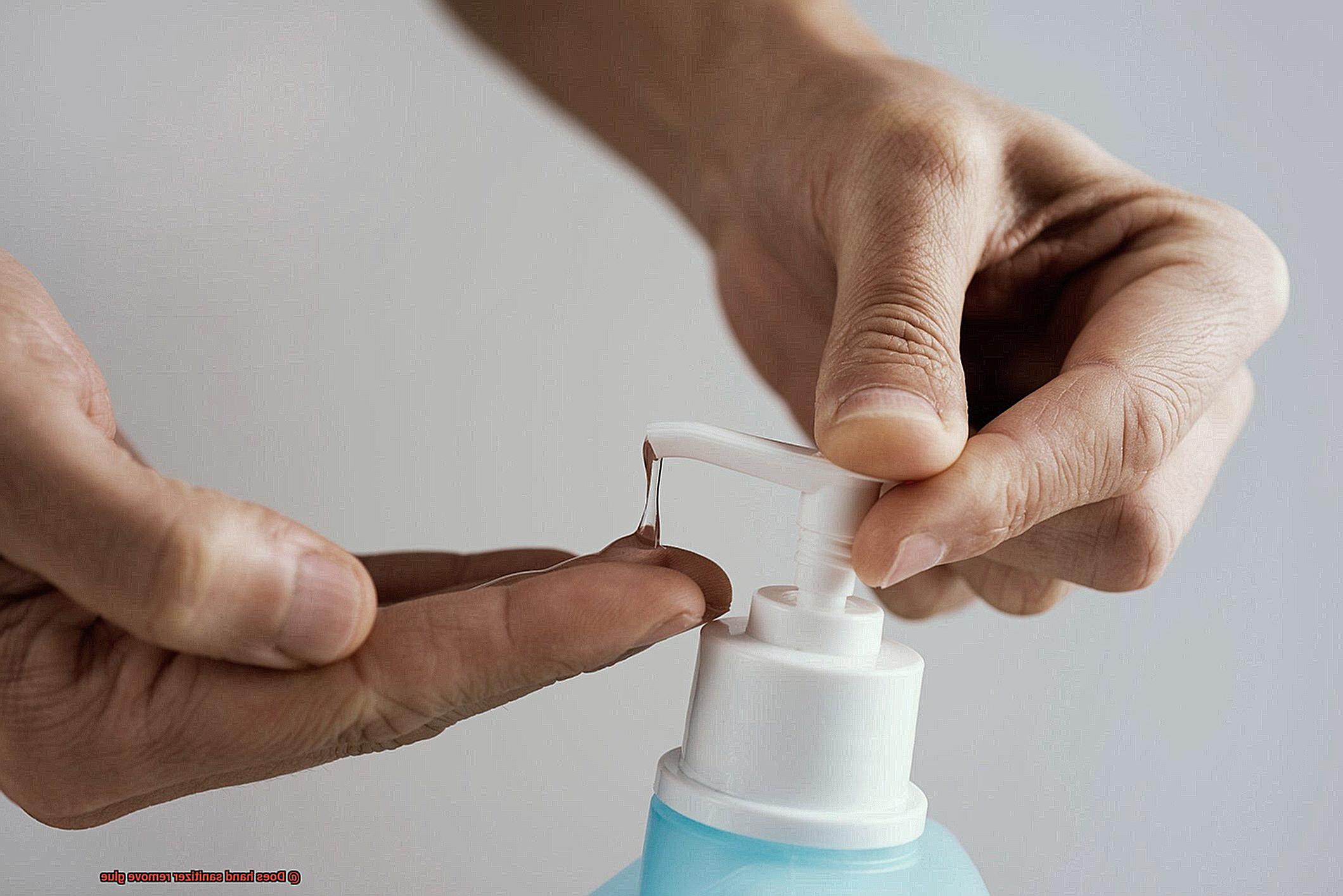
Choose the Right Hand Sanitizer:
Not all hand sanitizers are created equal when it comes to removing glue. Look for one with a high alcohol content, preferably 60% or more. The alcohol is the key ingredient that breaks down the adhesive properties of the glue, allowing for easier removal.
Test a Small Area:
Before applying hand sanitizer liberally, it’s crucial to test it on a small, inconspicuous area of the surface first. This step helps ensure that the hand sanitizer won’t cause any damage or discoloration.
Apply Hand Sanitizer:
Once you’ve found the right hand sanitizer and tested it, it’s time to tackle that stubborn glue stain. Squeeze a small amount of hand sanitizer directly onto the glue spot. You don’t need a lot; just enough to cover the affected area.

Gently Rub:
Using a soft cloth or sponge, gently rub the hand sanitizer into the glue stain. Avoid using excessive force or rough materials, as this may cause damage to the surface. The goal is to break down the glue without harming the underlying material.
Wait and Wipe Away:
Now comes the waiting game. Allow the hand sanitizer to sit on the glue stain for a few minutes. This gives it time to penetrate and loosen up the adhesive. Afterward, take a clean cloth or sponge and wipe away the softened glue. If there are still traces of glue remaining, repeat the process until the surface is clean and glue-free.
Alternative Solvents for Removing Strong Adhesives
We’ve all encountered those stubborn adhesives that seem determined to cling on for dear life. Whether it’s the remnants of super glue on a cherished possession or sticky residue from a DIY project, finding an effective solution can be quite the challenge.
While hand sanitizer may offer some relief, there are alternative solvents that pack a more powerful punch when it comes to breaking down strong adhesives. In this comprehensive guide, we’ll explore the effectiveness of various solvents and provide you with invaluable tips for achieving adhesive-free success.
The Superstars of Adhesive Removal:
Acetone:
With its potent solvent properties, acetone takes center stage in the battle against super glue or cyanoacrylate adhesives. However, exercise caution as acetone can strip away paint or damage certain surfaces. Before diving in headfirst, always test it on a small, inconspicuous area to ensure compatibility.
Rubbing Alcohol (Isopropyl Alcohol):
For those seeking a gentler alternative, rubbing alcohol emerges as a versatile solvent that tackles many types of adhesives. It generally poses less risk of causing damage and is safe to use on various surfaces. However, bear in mind that it may not be as effective against formidable foes like epoxy or construction adhesives.
Vegetable Oil:
Nature’s ally in the fight against adhesives, vegetable oil offers a natural approach to dissolving adhesive bonds and facilitating easy removal. Be prepared for a potential oily residue that necessitates post-treatment cleaning.
Nail Polish Remover:
Containing acetone as its active ingredient, nail polish remover proves to be another worthy adversary against stubborn adhesives. As with pure acetone, exercise caution and conduct a small area test before going all in.
Safety First:
When employing any alternative solvent, prioritizing safety is paramount. Shield your skin by wearing gloves and ensure you work in a well-ventilated area to minimize inhalation of fumes. Additionally, always test the solvent on a small, inconspicuous area to safeguard the integrity of the surface being treated.
When All Else Fails:
If the alternative solvents fail to achieve the desired result, do not lose hope. The market offers specialized adhesive removers meticulously formulated for different adhesive types. These products may just hold the key to conquering even the most stubborn glue residues.
What to Avoid When Using Hand Sanitizer on Glue
Hand sanitizer can be a convenient and effective tool for removing glue, but it’s important to approach the process with caution to avoid any potential damage or ineffective results. In this essay, we will explore five key aspects to keep in mind when using hand sanitizer on glue.
Avoid Applying Too Much Pressure:
One common mistake when trying to remove glue with hand sanitizer is applying excessive pressure or vigorously rubbing the area. This can actually spread the glue and make it more challenging to remove. Instead, take a gentle approach by dabbing or blotting the glue with a cloth or paper towel soaked in hand sanitizer. This method allows the alcohol in the sanitizer to dissolve the glue without further spreading it.
Stay Away from Fragrances and Moisturizers:
Hand sanitizers often come in various fragrances or with added moisturizers, but these additives can hinder the effectiveness of the alcohol in dissolving glue. It is best to choose a plain, unscented hand sanitizer when working with glue. This ensures that the alcohol content is not compromised and allows for optimal glue removal.
Consider the Type of Glue:
Different types of glue have different chemical compositions, which can affect their solubility in alcohol. Super glue or epoxy, for example, are known to be more resistant and may require alternative methods for removal. Always check the manufacturer’s instructions or seek professional advice if you are unsure about how to remove a specific type of glue.
Be Mindful of Sensitive Surfaces:
Not all surfaces are compatible with hand sanitizer. Delicate fabrics or painted surfaces, for instance, can be damaged by exposure to alcohol. To ensure compatibility, it is crucial to test a small, inconspicuous area before applying hand sanitizer to the entire surface. This precautionary step helps prevent any potential damage or discoloration.
Follow Safety Precautions:
When using hand sanitizer on glue, it is essential to work in a well-ventilated area to avoid inhaling any fumes. Additionally, if you experience any skin irritation, discontinue use immediately and seek medical advice if necessary. Prioritizing your health and safety is paramount when working with any chemical substance.
Conclusion
In conclusion, hand sanitizer is a valuable tool when it comes to removing stubborn glue from various surfaces. However, its effectiveness is contingent upon the type of glue and the surface it has adhered to. If you’re dealing with water-based glues like white glue or fabric glue, hand sanitizer can work wonders due to its alcohol solubility. But if you’re grappling with super glue or epoxy, additional methods or specialized solvents may be necessary for complete removal.
When employing hand sanitizer as your trusty adhesive eradicator, it’s crucial to opt for a brand with a high alcohol content and refrain from applying excessive pressure. Testing a small area before tackling the entire surface is paramount to prevent any unsightly damage or discoloration. And let’s not forget about those sensitive surfaces that may not play well with hand sanitizer – tread carefully.
While hand sanitizer proves its mettle in many cases, there are alternative solvents at your disposal for those particularly stubborn adhesives. Acetone, rubbing alcohol, vegetable oil, and even nail polish remover can all step up to the plate depending on the type of adhesive you’re contending with.
Ultimately, hand sanitizer presents itself as a convenient and effective solution for ridding yourself of unwanted glue gunk. Just remember to approach the process with caution and take into account the unique demands of each situation.

